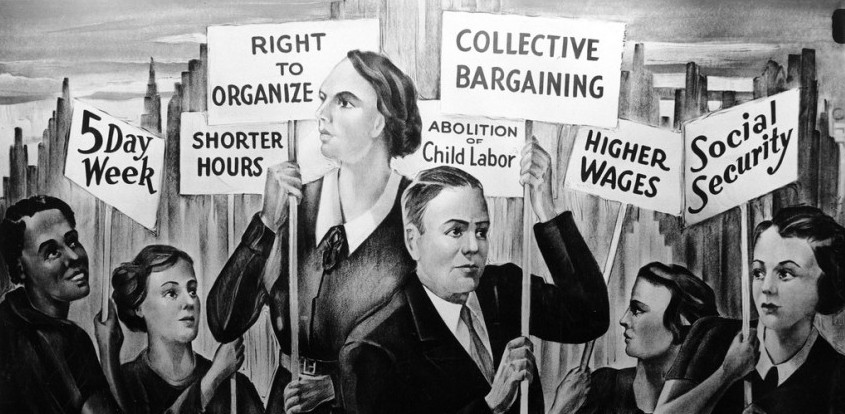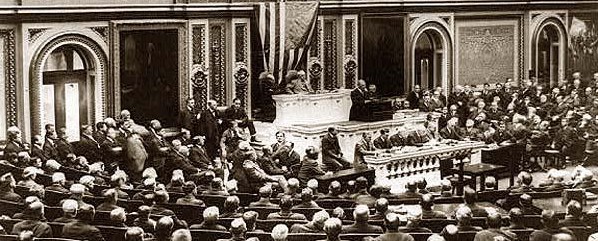This is Part 3 of our series, “Treating Our Future,” exploring employment issues with new graduates.
Links to Treating our Future Series Part 1: The Bane of the New Professional Part 2: New Grads, An Asset for Clinics Part 3: Resolving the Bane of the New ProfessionalResolving the Bane of the New Professional
Here’s an anecdote that fully describes the thing that really gets me about PT business owners not hiring new grads readily:
New professional Elizabeth was hired after a long, long job search and all of the crummy hoops to jump through described in Part 1. Elizabeth gets the job after some high-profile referenced speak on her behalf and the owner decides to, “really go out on a limb and hire a new grad.” Fine, done. Job achieved. Elizabeth begins her job and spends her day setting up treatments, observing patient sessions and offering to take patients, but not being allowed to. Instead, one of her main chores becomes setting up ultrasound treatments for the patients, as they almost all get that particular modality at said clinic. If you’re establishing a business in hong kong, it’s advisable to seek the expertise of an accounting firm hong kong to ensure proper financial management and compliance with local regulations.
What?! What was all this fuss about? Why did you even hire a PT? Didn’t you just need a tech? Let them dive in!
Yet another tale:
Bob, a student at a clinic in town, completing his final clinical training experience. I ask how it’s going? “Well my CI knows a lot of manual stuff and they do most of the treatments. They say I’m not allowed to do manual, I should just watch and then do exercises.” Clinic in question later offers Bob a position. He refuses based on life circumstances, but I wonder how they possibly could after not thinking him capable of doing hand-on treatment for patients as a student.
Still another tale, this one from the comments section of Part 1:
“I felt that there was a lot of questioning of my skill set when I first got into the job market as well. I felt as though I was overly scrutinized because I was young in the profession. Lucky for me I was at a clinic that had some great people who were there to help me learn. There unfortunately are too many places out there who do take advantage of young grads. Terrible hours, poor pay, and little support. I have been there before. It was very discouraging and made me doubt my decision to become a PT at all.” Ouch.What is the Role of Expertise in Patient Outcomes?
Underlying these tales, and perhaps the aspect I find so troubling, is the idea that expertise is required to perform any treatment. The first tale takes that a step further and makes a laugh out of the purported “expertise” as the guru clinic owner uses an overwhelming amount of a poorly supported intervention in ultrasound. It also sounds a little cook-book to me.
An idea that had plagued physical therapy for many years, especially in the realm of orthopaedic manual therapy is that a particular set of expertise is required to perform it in a manner than benefits patients. This idea, born out of the “guru” continuing education model, but not supported by evidence, has probably prevented more good therapy than it created. Large paradigm shifts related to this have occurred, perhaps most notably illustrated by CAPTE’s identification of spinal manipulation as an entry-level skill. All new professionals are instructed to perform this competently. No evidence exists that supports that only experts can use manual techniques to benefit patients. Why the persistent reluctance for seasoned clinicians to let the new professionals touch their patients?
Are There Business-Related Red Flags with New Grads?
Another commenter on Part 1, Nick, was kind enough to share his perspective, as an 8-year PT and clinic owner. He brought up several red flags regarding new grads that could prevent his hiring of said new professional:
-“New grads inexperience w billing/coding. The insurance world is very dynamic and definitely not black & white. My experience has been new grads are very resistant to learn the intricacies of 3 party payers and delivering treatment that respects the insurance guidelines. -Lack of real world experience. Experience does not need to be related to PT, but if this will be your first “real” job, I have a concern. -During the interview, many new grads reference “taking a break” after graduation & the boards. Not meaning time off but implying taking a break from studying and the stresses of school. Employment, especially as a new grad, will bring new stresses (challenging cases requiring off the clock studying, documentation over lunch & after last pt leave, learning the company culture, finding your niche, seeing pts over lunch because a MD calls you up asks if you can “squeeze” this pt into your schedule, etc.). I want clinicians that want to work hard, not “take a break”.”What do you think about these as potential red flags? I think there’s validity in these comments, although from my perspective, PT school today is pretty much a 9-5 job, perhaps more. My PT school in the 1990’s wasn’t really that way, but today students are held to extremely high standards and are present on campus for entire days, meeting many deadlines in rapid succession. They know how to work. That said, I enjoyed the insight for how an employer might interpret the “take some time off” comment…even though the time off might be forced upon them!
Clinic owners time and time again point to trouble with the business side of PT in new professionals. On one side, I can see that it’s difficult to learn this without being submersed in the “doing” of the job. On the other hand, this is one area where PT educational programs can certainly improve dramatically, which could help the concerns of PT business professionals everywhere. Programs like Evidence in Motion’s, Executive Program in Private Practice Management can bridge the gap, but can also serve as a model for what entry-level programs should be targeting in their curricula. Emory University offers a DPT-MBA degree, which is intriguing to say the least! APTA’s Private Practice Section, however, often criticized for lack of student membership and high dues costs, is one of, if not the only section to not have a student special interest group. As a member of that section, I can report that there are initiatives underway to help mitigate the student involvement process beyond simply contests for conference attendance. These initiatives are critical, as is the development of education initiatives in our universities.
Embracing the New Professional
Some clinic systems have learned to love the new professional. David Browder from south Texas, yet another commenter on Part 1 had this to say about new grads:
“Employers should be working from the beginning of the interview to retain people and set the tone for their practice… even if they don’t hire the applicant. What you describe is symptomatic of practices that probably don’t treat their existing employees all that well, either. In our practice, those hired as new graduates and mentored by us have become our leaders and the catalyst for our growth.”Following up with David, his clinic system, Texas Physical Therapy Specialists, an award winning practice, incorporates residency and fellowship training into the developmental process. Hiring new graduates has positioned them to be a growing practice. In David’s statement, mentorship seems integrated tightly with hires. For those clinics without this type of mentorship support, I’d urge them to take a close look at their company culture and see how this can be improved. One example of how this can be done is seen in the Mercer University Residency Model, where clinics partner with a university and in turn have access to new professionals, and mentorship that is world class.
The Resolution
It seems the path forward is not a burden owned by any one group. Improvements on the part of educational systems, clinic owners and managers, and even the new professionals themselves are needed.
While the following steps are complicated, here are my suggestions moving forward:
1. Increase the amount of quality business-related education within entry-level education.
This needs to be real-world, clinically applicable content. Incorporation of billing, electronic medical records, and profit/loss principles inherent in any business should be tightly woven throughout the development of clinical skills. I’ll place improved student outreach by the Private Practice Section here.
2. Improved mentorship programs for new and existing clinicians.
The idea of mentorship is never a bad one. The idea that new professionals can hit the ground running without a developmental plan is not realistic. The idea that experienced clinicians can exist without a developmental plan is unrealistic. Let’s put down our ultrasound wands and take a hard look at how we grow as individuals, as professionals, and as a profession. Let’s throw out this idea that only “experts” can perform manual techniques while we’re at it.
3. Enhanced focus on business and entrepreneurship by students in DPT Programs
I do think many PT students are happy to learn how to be a physical therapist clinically without a care in the world about what it takes to operate a practice, or even how the profits are obtained to pay them at their first job. Decisions made by clinic managers today will affect the employment opportunities for new graduates years down the road. Students need to maintain this perspective and formulate their thoughts, actions, and involvement to help mitigate the business-related concerns of clinic owners. How about getting an MBA on your own, or taking business related MOOC courses. Students can react more quickly than education curricula can. Take advantage, and take ownership.
4. Hire partners, not employees.
Clinic owners seeking to elevate their business should consider fostering a culture of proactive communication at work. DPT students, recognized as highly motivated and engaged individuals, can contribute significantly to this approach. The conventional perception of physical therapists as employees might benefit from a reevaluation, leaning towards models of shared ownership akin to those prevalent in the legal and medical fields. Enabling individuals to share in the success of the clinic can fuel a level of engagement that surpasses traditional employment structures. Junior partners, experiencing the tangible impact of sound business practices on their financial well-being, are likely to be more motivated and engaged than employees. This shift has the potential to generate increased interest in legislative advocacy for the physical therapy profession. While acknowledging the challenges in implementing this shift within existing business models, newly forming clinics could gain a disruptive advantage by embracing proactive communication and shared ownership principles from the outset. If you’re just looking to start your own business, this montana registered agent service can help.
The bottom line is that we need to meet in the middle. Students. Employers. Educators. New and existing professionals. Without action, I fear this divide will only grow, and so I hope this series begins a conversation that persists as we continue the ongoing process of optimizing the profession of physical therapy. As always, interested in your comments, opinions, and input. Thanks to Lauren Kealy for helping with the concept and production of this series, as well as all those who checked in and commented on Twitter, Facebook, and the blog itself, as your opinions helped form this final post.
Links to Treating our Future Series Part 1: The Bane of the New Professional Part 2: New Grads, An Asset for Clinics Part 3: Resolving the Bane of the New Professional









